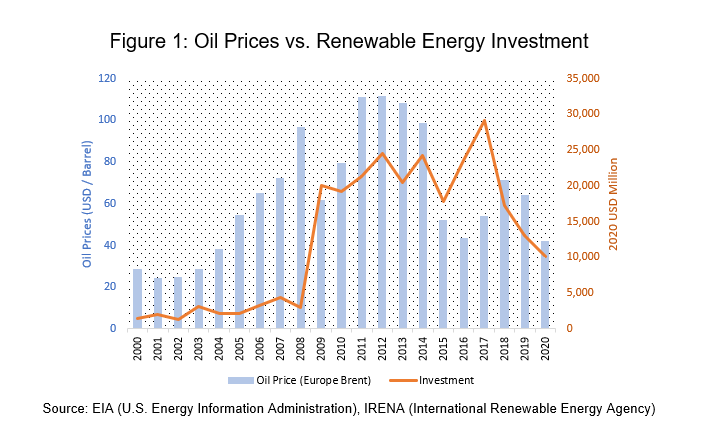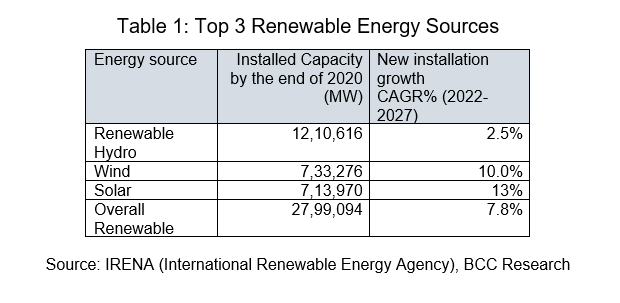 Many countries across the world are grappling with inflation. In the US, the annual inflation rate reached 9.1% in June 2022, the highest since 1981. One of the key reasons is high oil prices, which are troubling everyone, from consumers to businesses.
Many countries across the world are grappling with inflation. In the US, the annual inflation rate reached 9.1% in June 2022, the highest since 1981. One of the key reasons is high oil prices, which are troubling everyone, from consumers to businesses.
Spikes in oil prices are not new and have happened many times in the past, be it the Iran-Iraq war, Iraq’s Kuwait invasion, the 9/11 attacks, or the 2008 financial crisis. This time the culprit is Russia’s invasion of Ukraine.
Renewable energy is a long-term solution that can help us reduce our oil dependency and save us from the economic miseries caused by it from time to time. Oil and renewables, though they are different from each other in many aspects, have a peculiar relationship. In this article, we will explore how oil prices impact investments in renewables and what is the preferred choice of investors now.
Investment in Renewable Energy vs. Oil Prices
To move away with oil, gas, and coal, many countries have been framing policies and taking initiatives in favor of renewable energy. While most problems associated with fossil sources are futuristic (such as carbon footprint and clean air, etc.) and do not often motivate policymakers to respond quickly, high oil prices create imminent pressure and help renewable energy go up on the policymakers’ priority lists.

Figure 1 shows oil prices and public investments in renewable energy from 2000 to 2020. We can see a sudden rise in renewable investments in 2009 after a continuous increase in oil prices from 2002 to 2008. Oil prices remained at a higher level between 2010 and 2014, and so did renewable investments. The prices dropped in 2015 and remained at a lower level afterward than they were during the past five years, and we saw a downfall in renewable energy investments starting in 2017 and 2018.
Recently, Russia’s invasion of Ukraine escalated the prices again. And coincidentally, investments during the first six months of 2022 are up by 33% in solar and 16% in wind from the first half of 2021 (Source: ETEnergyWorld). This all indicates a positive correlation between oil prices and investments in renewables.
There are other factors too that drive investment in renewable energy; for instance, the fact that renewables allow small investments compared to conventional power. Renewable farms like wind and solar can be built with smaller investments than what is needed for conventional energy plants and thus attract a number of smaller private investors. Another factor is price, which came down for renewables with technological advancements, making it more lucrative for investors. But among all, oil price appears to be one of the critical factors, at least when we look at the data.
Investors’ Preferences for Renewable Energy
At present, hydroelectric is the largest renewable energy source in terms of installed capacity. However, this oldest renewable electricity source has its own challenges. A hydroelectric plant takes a huge investment, building it takes significant time, and it has ecological and social issues.

Wind was the second largest source by the end of 2020, but solar came ahead of wind in 2021. In the next five years to 2027 (Table 1), solar will have maximum growth among the top three sources. Both wind and solar offer great potential; one is usually better than another, depending on the location. Yet solar ended up being the most preferred choice of investors. As per IRENA data, public investments in solar were 1.5 times higher than wind during the last five years ending in 2020 and 2.6 times higher in 2020 alone.
The size of a solar energy project can vary from minuscule (such as a solar light) to large plants spanning acres, welcoming all sizes of investments. Solar PV systems are inexpensive and more accessible to install than complex installations of wind or hydroelectric turbines. In recent years, the efficiency of solar PV has increased noticeably, along with significant cost reductions. As a result, solar turned out to be the most preferred renewable energy source for investors.
Renewable Energy Market Research Reports
If you would like to explore renewable energy market research in more depth, please refer to the following resources:
- Solar Energy Markets, July 2022
- Renewable Energy: Technologies and Global Markets, June 2022
- Biogas Upgrading: Technologies and Global Markets, November 2020
- Biofuels: Global Markets, April 2020
- Biodiesel Feedstocks: Technology, Synthesis, Efficiency and Policies, March 2020
About BCC Research
BCC Research provides market research with a boutique touch and a depth of expertise in a variety of markets. Dedicated to serving the academic community, corporate professionals and innovation teams, we provide market intel covering 25 industries across verticals in life science, environment/sustainability, materials, sensors, and commerce.
About the Author: Anand Dubey is an Associate Director at BCC Research, where he focuses on strategy & insights, thought leadership, market research, and data analysis. Before moving into a management role, he earned an MBA, served as an industry analyst for more than a decade, and wrote a wide variety of market research reports.

